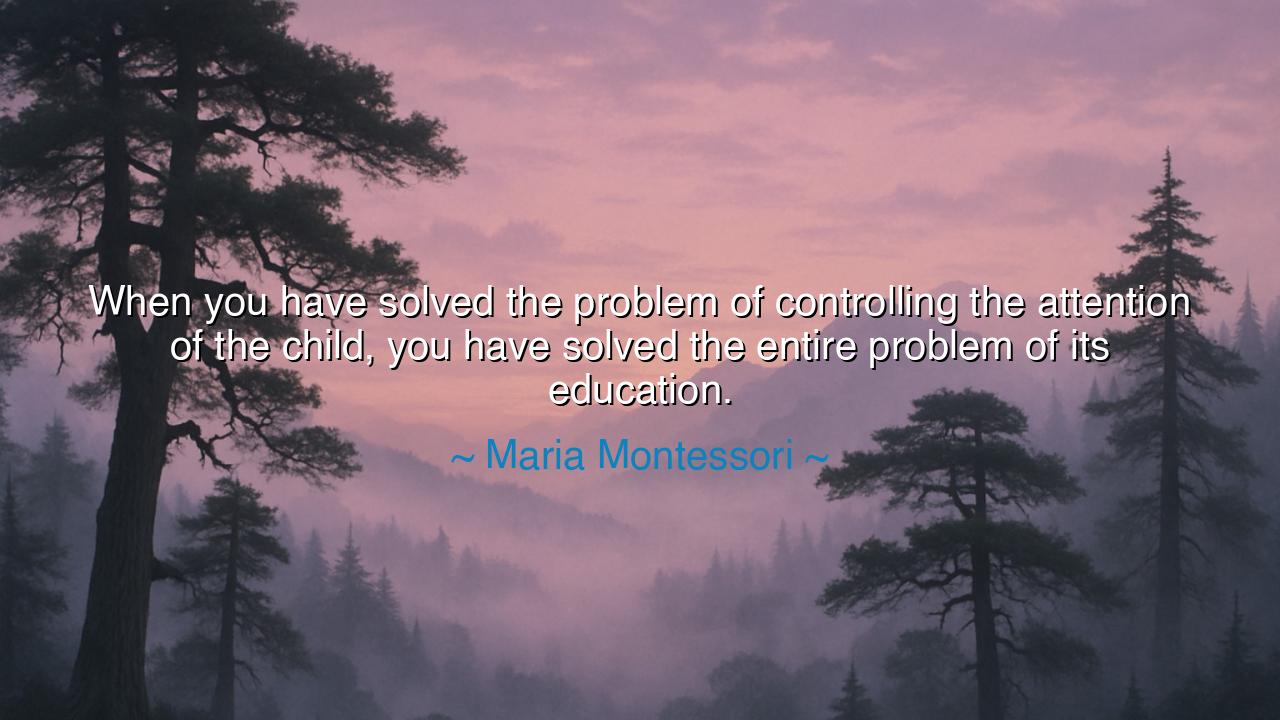
When you have solved the problem of controlling the attention of
When you have solved the problem of controlling the attention of the child, you have solved the entire problem of its education.






In the words of Maria Montessori: “When you have solved the problem of controlling the attention of the child, you have solved the entire problem of its education.” These words are not merely the thoughts of a teacher, but the utterance of one who peered into the heart of learning itself. For education is not the filling of a vessel with knowledge, but the directing of a flame so that it burns steadily, brightly, and with purpose. To capture the attention of the child is to awaken the divine spark of curiosity, and once that spark has been kindled, the soul of the learner carries itself forward with joy.
The ancients knew that where the mind goes, the soul follows. The philosophers of Greece, like Plato and Aristotle, spoke often of the importance of turning the eye of the soul toward truth, as a flower turns toward the sun. Without attention, knowledge passes through the mind as wind through an open window—there for a moment, then gone forever. But when the child’s gaze is fixed with wonder, when the heart delights in discovery, then every lesson becomes an imprint on the soul, indelible and enduring.
Consider the life of young Thomas Edison. As a boy, he was restless, easily distracted, and even deemed “difficult” by his teachers. Yet when his mother guided his attention toward experiments, books, and the wonders of nature, his restless energy became focused fire. What once seemed disorder transformed into genius. This is the truth of Montessori’s wisdom: the difference between folly and greatness is not the child’s capacity, but the ability to direct the attention toward fruitful ground. Once this power is captured, the rest of education unfolds naturally.
Montessori herself witnessed this in her schools. She observed that when children were given tasks that appealed to their natural curiosity—arranging objects, caring for plants, counting beads—their attention became absorbed, and discipline arose not from punishment but from engagement. The classroom, once filled with chaos, became a sanctuary of focus and peace. She discovered that the secret of education was not to force the child, but to guide the child’s attention to what nourishes the mind and spirit.
Yet how often in history has this truth been ignored? Too many teachers, rulers, and parents have tried to pour knowledge into inattentive ears, only to find it vanish like water on dry sand. The Romans built vast schools but often relied on fear and force, producing obedience but not wisdom. In contrast, the most enduring teachers—Confucius in China, Socrates in Athens—knew that their true task was to stir the heart, to capture attention through questions, stories, and dialogue. Their legacies remain, because they aimed not at the ear but at the soul.
The lesson is clear: if you would teach, seek first not to instruct but to inspire. If you would guide a child, win their attention not through fear, but through curiosity, patience, and wonder. If you would learn yourself, train your own attention as a warrior trains his sword, so that it may cut through distraction and fix itself upon what is worthy. For mastery of attention is mastery of the self, and mastery of the self is the beginning of wisdom.
Therefore, O listener, take this teaching into your life: when next you teach or lead, remember that the key lies not in how much knowledge you pour forth, but in whether the flame of attention is kindled. Be patient. Be creative. Be gentle. Direct the gaze of the child—or the gaze of your own restless heart—toward what is true, what is beautiful, what is worthy of pursuit. And then, as Montessori declares, you will find that the entire problem of education is already solved.






AAdministratorAdministrator
Welcome, honored guests. Please leave a comment, we will respond soon